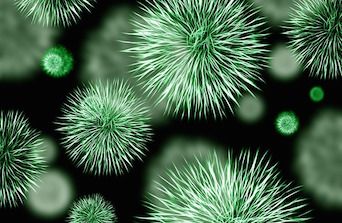Silver Nanoparticles and Postsurgical Wound Treatment
Silver nanoparticles have demonstrated marked antibacterial activity against multi-drug resistant bacteria commonly found in infected postsurgical wounds in humans.

Using a leaf extract, researchers synthesized silver nanoparticles (Ag-NPs) that demonstrated marked antibacterial activity against multi-drug resistant bacteria commonly found in infected human postsurgical wounds, according to a study recently published in Microbial Pathogenesis. Study results suggest that nanoparticles created through environmentally friendly processes “have potential applications in the field of nanomedicine for the effective treatment of wound infection,” the researchers wrote.
Postsurgical wound infections affect 15% to 60% of surgical patients. These wounds are frequently nosocomial and can have serious financial and health consequences. The bacteria most commonly found in postsurgical wounds—Staphylococcus aureus, Pseudomonas aeruginosa, coagulase-negative staphylococci (CoNS)—demonstrate multi-drug resistance, making wound treatment difficult.
Ag-NPs have strong antimicrobial activity at low concentrations with minimal toxicity. Researchers have begun to explore “green,” chemical-free methods to synthesize Ag-NPs. One such method is the use of leaf extracts, such as that from the shrub Corchorus capsularis. C. capsularis has many clinical uses (laxative, appetite stimulant) and can act as a reducing and stabilizing agent for Ag-NP synthesis.
For the current study, researchers synthesized Ag-NPs from a C. capsularis leaf extract and used advanced imaging techniques to analyze the Ag-NPs’ size, morphology, and crystal structure. They also collected wound swab samples from patients with clinically evident postsurgical wound infections; swabs underwent testing to determine gram negativity or positivity. Researchers then performed a series of tests to evaluate the Ag-NPs’ antibacterial activity against the 3 bacterial isolates (S. aureus, P. aeruginosa, CoNS) as well as cytotoxicity.
Study Results
Ag-NP Structural Characteristics
Using UV-visible spectroscopy, researchers demonstrated Ag-NP stability for up to 1 month at room temperature. Transmission electron microscopy indicated that the Ag-NPs were elliptical and spheroidal; using a histogram, researchers calculated a mean Ag-NP size of 20.5 nm. Other imaging techniques, including X-ray diffraction, revealed the Ag-NPs’ highly crystalline structure with minimal crystal asymmetry.
Ag-NP Antibacterial Activity
Researchers performed a disk diffusion assay, which demonstrated that increased Ag-NP concentrations linearly increased diameters of the zones of inhibition for each of the bacterial isolates. Mean zone of inhibition diameters were generally similar among the isolates at the highest Ag-NP concentration used (60 µg/mL). Notably, Ag-NP activity was favorable to that of gentamicin.
Another assay was performed by treating about 100 colony-forming units (CFU) of bacterial isolates with increasing Ag-NP concentrations, up to 100 µg/mL. The number of CFUs dropped markedly with higher Ag-NP concentrations, particularly for S. aureus and CoNS. Researchers observed that reduction of CFU numbers was notable even at the lowest Ag-NP concentrations.
Bacterial growth kinetics were also measured. At 3-hour intervals up to 24 hours, bacterial growth decreased over time and with increasing Ag-NP concentration.
To explain this antibacterial activity, researchers described how Ag-NPs penetrate the bacterial cell wall and release silver ions, which generate reactive oxygen species; the reactive oxygen species likely play a major role in Ag-NP antibacterial activity, which includes disrupting both cell membrane integrity and important cellular functions, ultimately resulting in cell death.
Ag-NP Cytotoxicity
At a range of concentrations up to 200 µg/mL, Ag-NPs demonstrated minimal cytotoxicity in mouse embryo fibroblast cells. In fact, toxicity remained undetectable at each Ag-NP concentration until the last time point (72 hours), at which toxicity was detected at the 3 highest concentrations.
Conclusions
­Study results indicate the potential clinical usefulness of Ag-NP for treating postsurgical skin wounds infected with multi-drug resistant bacteria. In addition, the authors noted, Ag-NPs could be used to produce wound-healing bandages.
Dr. JoAnna Pendergrass received her Doctor of Veterinary Medicine degree from the Virginia-Maryland College of Veterinary Medicine. Following veterinary school, she completed a postdoctoral fellowship at Emory University’s Yerkes National Primate Research Center. Dr. Pendergrass is the founder and owner of JPen Communications, a medical communications company.